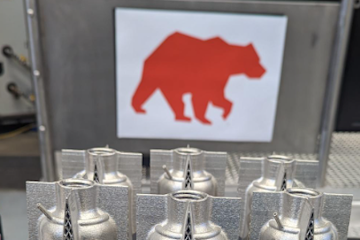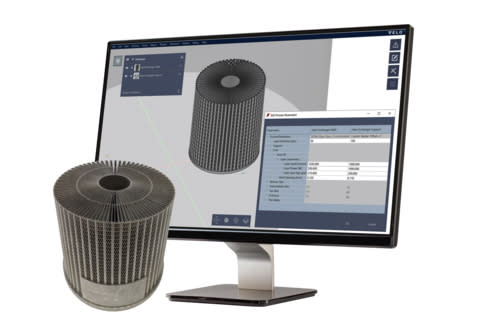Velo3D, the Silicon Valley-based, metal additive manufacturing (AM) original equipment manufacturer (OEM), has released Developer, a new parametric control tool available through Flow 7.0, the latest update to the company’s print preparation software. In anticipation of the rollout, Velo3D released Developer to certain key customers, one of which was rocket motor manufacturer Ursa Major, which recently made headlines owing to Undersecretary of Defense for Research and Engineering Heidi Shyu’s allusion to the company in congressional testimony.
The premise behind Developer is equal parts simple and compelling. Users can import the parameters of previous prints — for parts produced on Velo3D machines or other metal systems — and then tweak those parameters for specific applications. By enabling users to leverage what Velo3D refers to as “editor-level access”, Developer also allows the individual to change those parameters for new material formulations.
Given the fact that Ursa Major’s latest breakthroughs have involved applying principles from the company’s success with liquid propellant engines to solid rocket motors (SRMs), it certainly seems possible that Developer played a key role in that process. This would appear particularly likely given that Ursa Major’s main differentiator is its modular design approach, which the company deploys in order to seamlessly alternate between motors of varying sizes in the same production line.
Image courtesy of Ursa Major
In a press release about Velo3D’s new Developer tool for Flow 7.0 software, Thomas Pomorski, AM Manager at Ursa Major, said, “It can be a challenge to produce repeatable results across different metal 3D printers — even when they’re the same model of printer — however, Velo3D’s solution can consistently produce parts within spec across any of its printers, which provides huge benefits for companies looking to scale production of their parts. When our team first tested Flow Developer, we transferred parameters we developed on a non-Velo system, hoping we could easily produce the same part on Velo3D’s system and then take advantage of the scalability it provides. On our first try, we imported a part with highly complex, sensitive features and achieved incredible results that were within specification. Since then, we’ve accomplished the same process with other parts and in some cases, have been able to reduce print time by nearly 50% without sacrificing accuracy or quality.”
Image courtesy of Velo3D
It should also be noted that in December 2023, Velo3D announced that the company became the first metal 3D printing OEM to achieve the highest-level Security Technical Implementation Guide (STIG) Compliance, for cybersecurity, with DoD. Among other things, this allows Velo3D’s printers to be connected to the DoD’s Secret Internet Protocol Router Network (SIPRNet), as well as the DoD’s Non-classified Internet Protocol Router Network (NIPRNet). It also allows all other federal agencies and contractors to use Velo3D printers on their own government networks.
Thus, this is a perfect example of why the whole “end-to-end ecosystem” thing isn’t just a marketing buzzword. In fact, properly executed, the success of ecosystems as ecosystems looks poised to be the most important factor in determining winners and losers in the next phase of AM history. As Velo3D, among others, illustrates, this is about two things: repeatability and scalability. For the companies like Ursa Major that are ushering AM into a new era, nothing less will do.
Subscribe to Our Email Newsletter
Stay up-to-date on all the latest news from the 3D printing industry and receive information and offers from third party vendors.
You May Also Like
Gorilla Sports GE’s First 3D Printed Titanium Cast
How do you help a gorilla with a broken arm? Sounds like the start of a bad joke a zookeeper might tell, but it’s an actual dilemma recently faced by...
Nylon 3D Printed Parts Made More Functional with Coatings & Colors
Parts 3D printed from polyamide (PA, Nylon) 12 using powder bed fusion (PBF) are a mainstay in the additive manufacturing (AM) industry. While post-finishing processes have improved the porosity of...
$25M to Back Sintavia’s Largest Expansion of Metal 3D Printing Capacity Since 2019
Sintavia, the digital manufacturing company specializing in mission-critical parts for strategic sectors, announced a $25 million investment to increase its production capacity, the largest expansion to its operations since 2019....
Velo3D Initiates Public Offering in a Bid to Strengthen Financial Foundations and Drive Future Growth
Velo3D (NYSE: VLD) has been among a number of publicly traded 3D printing firms that have attempted to weather the current macroeconomic climate. After posting a challenging financial report for 2023,...

































